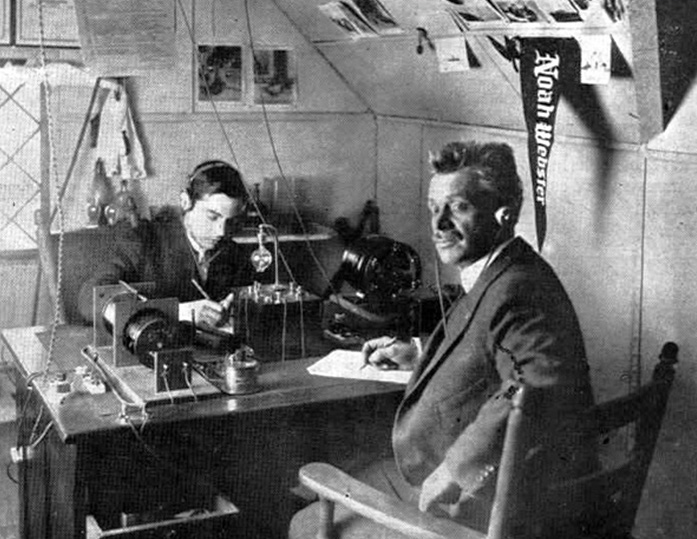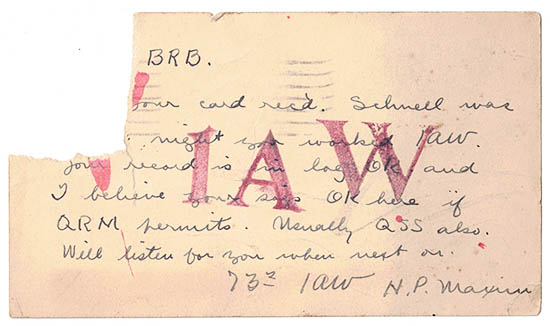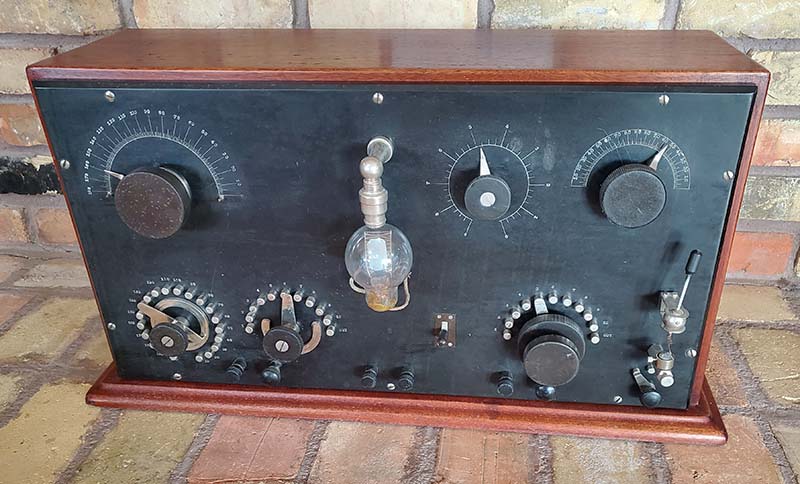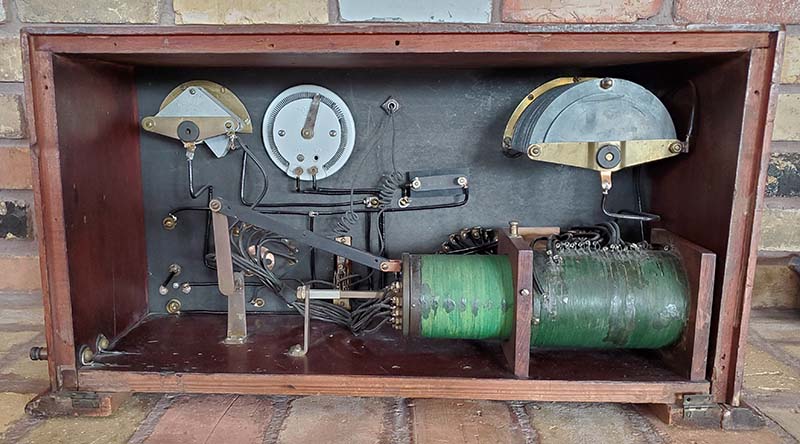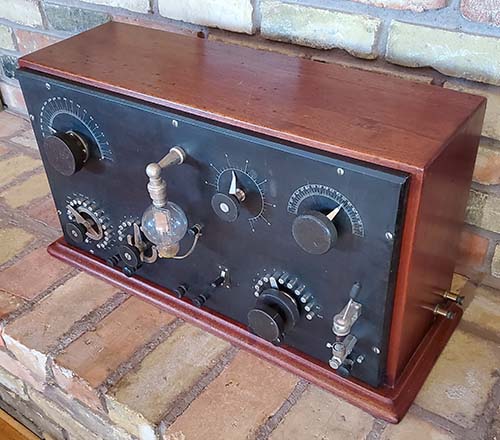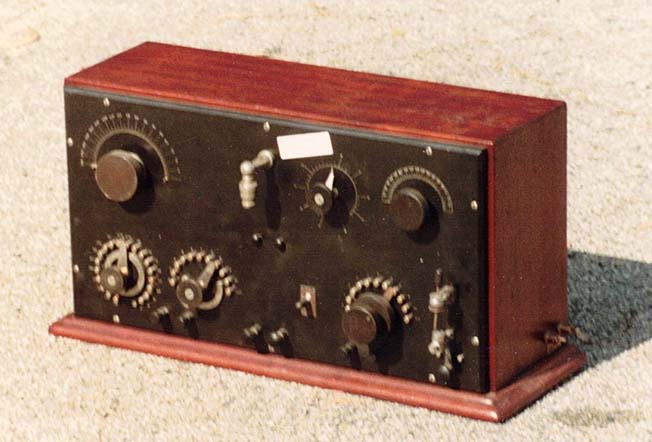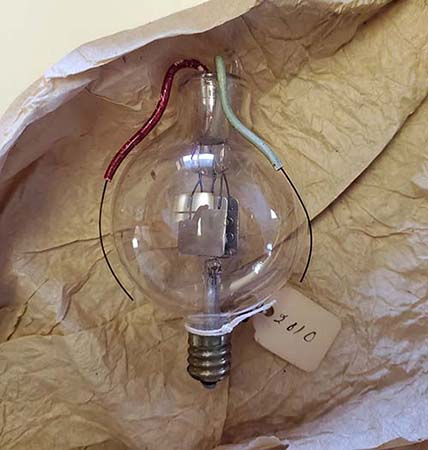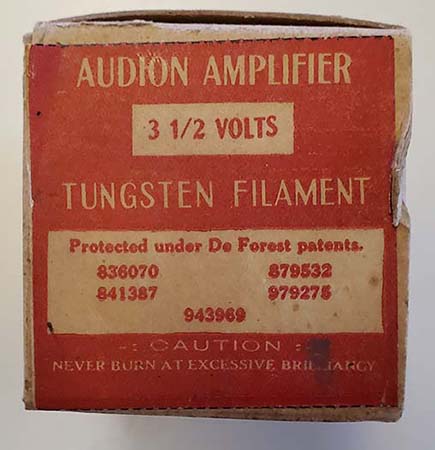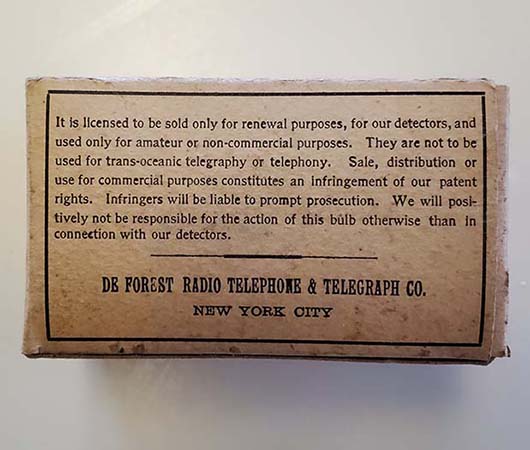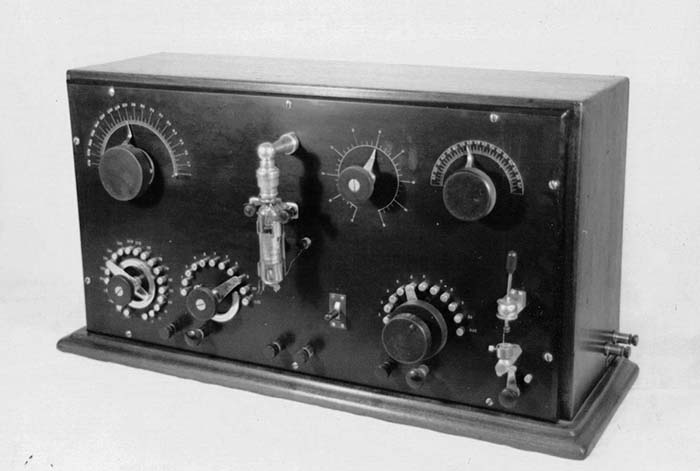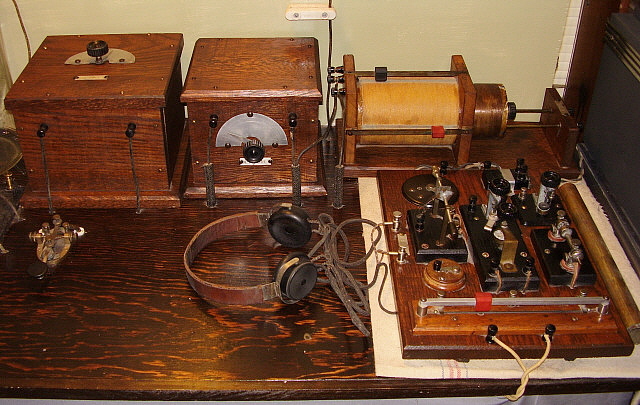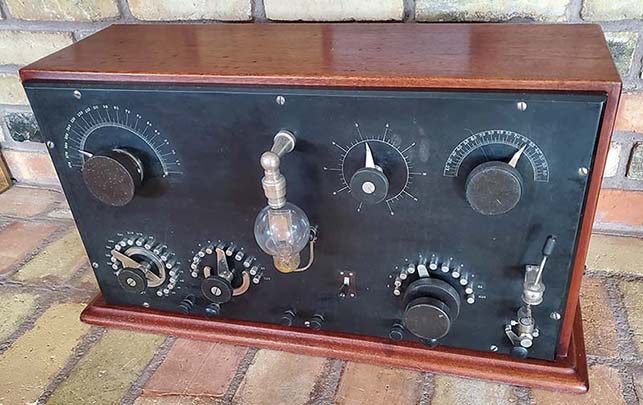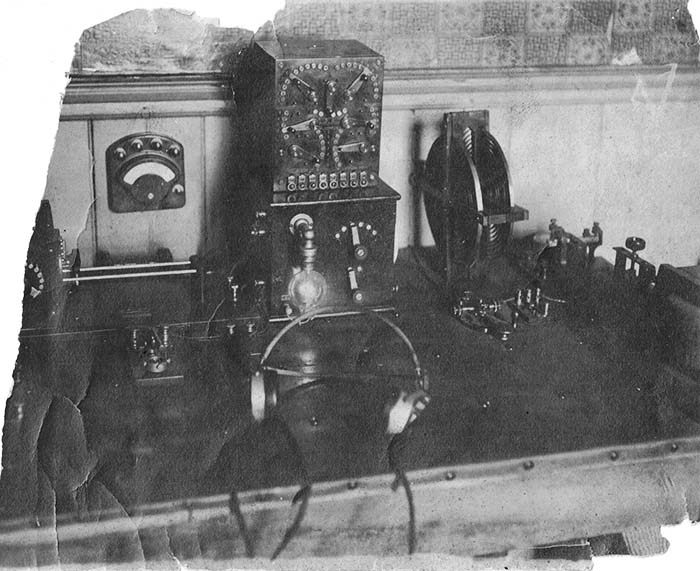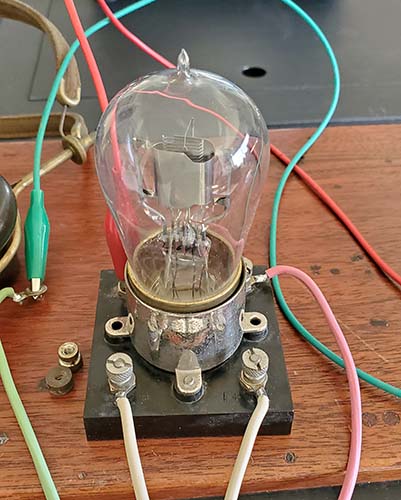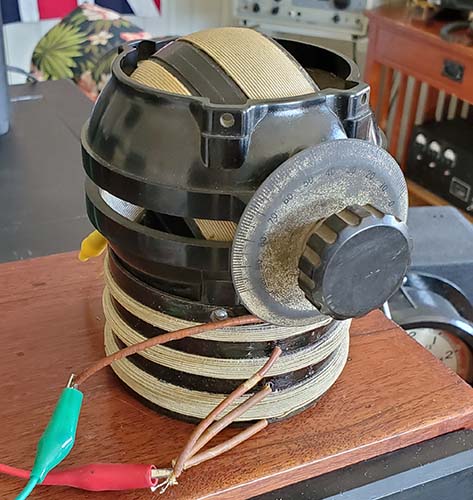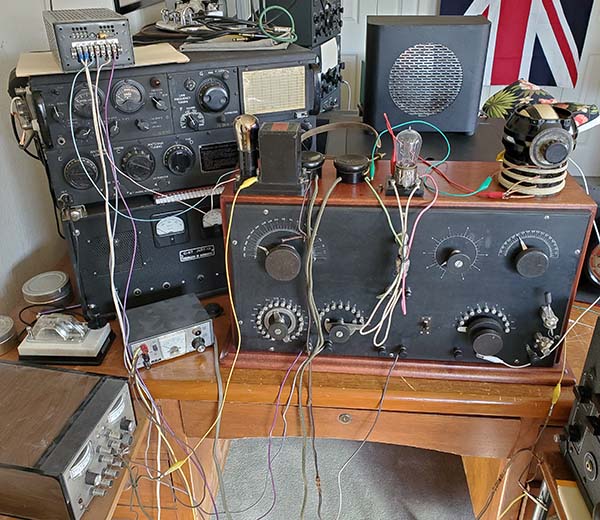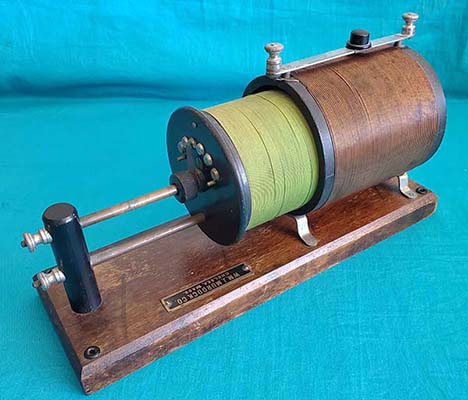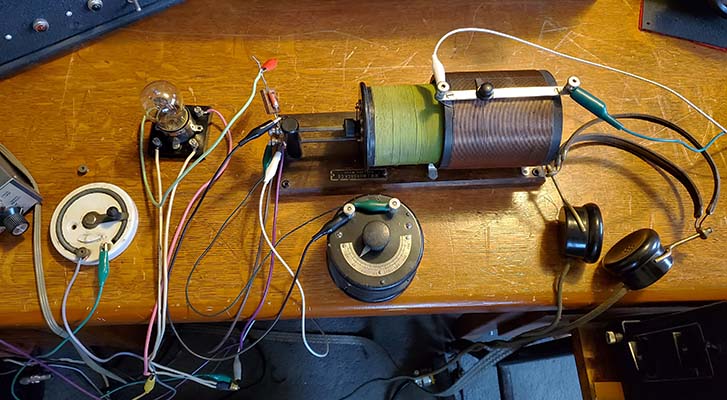|
Crystal Detector
Testing - With the HP606B connected to the Antenna Input I could
really "pound a signal" into the receiver since I was testing with the
"original" galena detector. I was using a pair of Baldwin phones. With all the controls set about mid-point and
the coupling set pretty tight, I heard the HP606B in the phones. I little
tweaking got the signal pretty loud (for a crystal set.) I had the
frequency from the HP606B set at 400kc. Since the HP606B has an output Z
of 50 ohms, which is very low compared to the typical end-fed wire
antenna used, the output was coupled through a very small capacitor
of 200pf to simulate the typical antenna and then allow the primary
antenna circuit to "tune" somewhat normally. With the coupling
"tight," that is, the secondary fully inside the primary, there won't be much in the way of
selectivity. One has to remember the old crystal sets and how they
seemed to receive ALL of the AM-BC stations simultaneously and the
slider-tuner didn't help. Well, with tight coupling this receiver is
about the same. With a strong signal, the apparent bandwidth is about 1000kc (this isn't an
exaggeration) and that
was probably fine before WWI,...maybe even necessary since there were
very few transmitting signals. Stronger signals and broad bandwidth
helped early wireless operators hear the very few stations transmitting. But, by 1916, with more and
more stations starting to
transmit, loose coupling was required with the secondary fully
with-drawn from the primary (or almost so.) This will result in
selectivity that's about 50kc to maybe 100kc or so. Of course, all of
the
spark signals were broader than that, especially if the transmitter was
in your neighborhood and the ham was still
using a helix. With proper and careful
tuning, the signals are quite strong even with very loose
coupling. Of course, I had switched over to a 1N34 germanium diode by
the time I was doing the selectivity testing. |
Further Testing
Raises Some Interesting Questions
- I had to move the SARX into the ham shack in order to
have access to a large, outdoor antenna and a good ground
(counterpoise and house ground.) Almost immediately, I tuned in strong signals
(for a crystal detector) coming from KPLY 630kc and from KKOH 780kc, both Reno
AM-BC stations. The first detailed test was to see what the actual tuning
range of the receiver was. I set up the HP606B connected to a 30'
wire so I could have strong coupling to the receiver antenna input.
Tuning Range - I
started at 400kc and was able to quickly tune in the test signal.
Next, 200kc. Again, easy to find and tune in. 100kc was next but it
seemed that some of the turns on the LC were not connected (possible
internally open, I'll have to check.) I think 100kc would tune but
it would be close to the low end of the range. The next test was at
1000kc and this was tuned in easily. Next was 1500kc and to my
surprise, I could just tune in 1500kc. It was at the very upper
limit but it could be
tuned. I had the coupling set to very, very loose for these tests to
allow sharp selective tuning,...well, as sharp as a Loose Coupler can get.
However, when tuning stations over the air the results are different.
When connected to a large antenna with a good ground, AM-BC signals are
strong but it's impossible to tune the receiver selectively
any higher than about 1000kc (even with very loose coupling.) There's a 10kw AM-BC station located 15
miles away in Carson City transmitting on 1300kc. It's a very strong
signal here in Dayton and it broadcasts distinctive programming that's
easy to recognize. However, I absolutely could not tune in 1300kc
at all. Even with tight coupling, the 1300kc station wasn't heard. Due
to the lack of selectivity, the 50KW KKOH seems to dominate the
capabilities of the SARX and prevents "finding" weaker stations.
By "pounding a signal" into the SARX with a signal
generator, I could tune to 1500kc. But, with "over the air" BC signals, I'd
say 1000kc is the realistic upper limit of tuning. To get a response at
1000kc required fairly tight coupling with a corresponding wide
bandwidth. With loose coupling, about 800kc is the highest "over the
air" frequency
that can be tuned. Again though, the real problem is lack of selectivity and
powerful AM-BC stations dominating a wide slice of the tuning range when
using "over the air" signals. |
